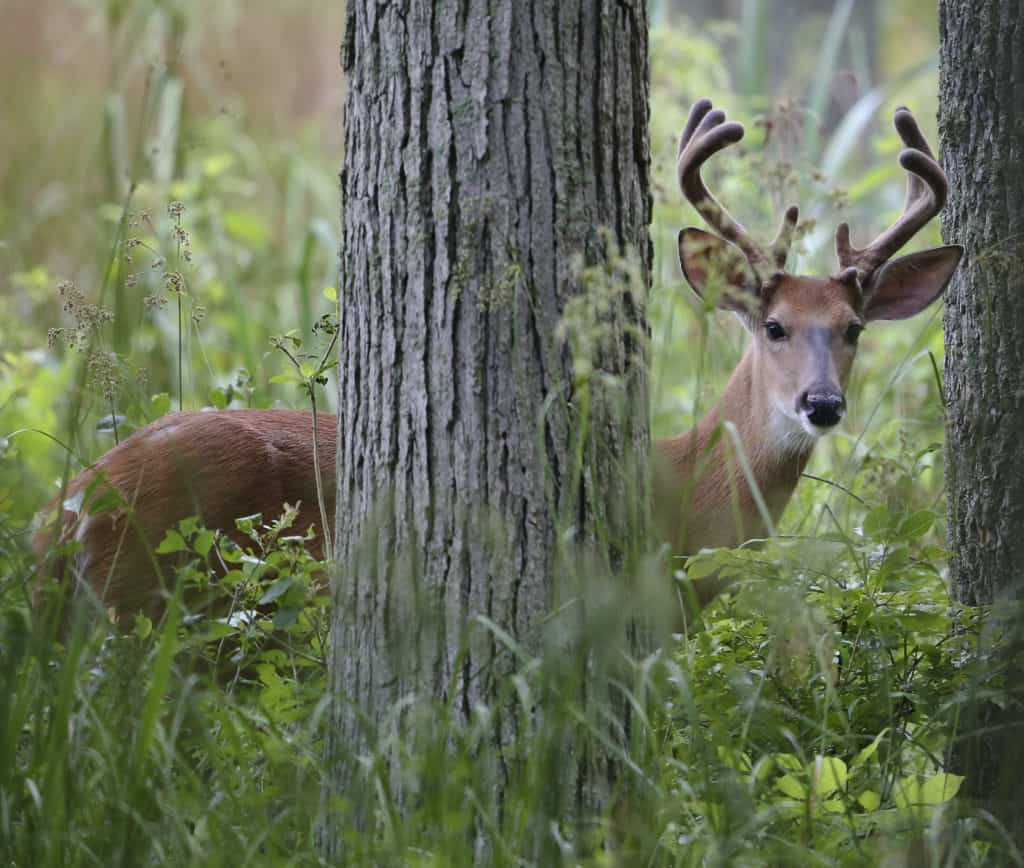Creature Feature

Dangerous Deer in Love:
Beware the Rut
By Wayne Bierbaum
As I was driving home last week, I saw five large bucks roaming around the far end of a soybean field. Each had lost the fuzzy cover to its antlers and were standing with their heads up eyeing each other. I was reminded that it is the start of the season where my drive to work will become more dangerous. The rut is starting.
After growing antlers over the summer, by October the bucks have finished rubbing off the velvet coat. The velvet is a nutrient covering that created the antlers. As the antlers mature, the blood supply to the covering dries up and the velvet starts to die and peel. The peeling layer is irritating so the deer try to scrape it off against trees. As the bucks scrape off the velvet, they are also becoming more aggressive and irritable and beginning to practice their fighting skills. It’s their equivalent of a testosterone rage that leads them to fight for the attention of does. The bucks will chase rival males and the does frequently without caution, making them easier to hunt and potentially be hit by a car.
Before European settlers arrived, the white-tailed deer population, with more natural predators and fewer open fields, was much lower—about 300,000 in all of the U.S. Clearing forests for farming created more grazing land and initially helped increase the deer population. However, improvements in weaponry and hunting techniques caused the number of deer to steadily drop over the years. By 1900, elk and deer were thought to be extinct in much of the eastern U.S. Hunting was banned in many states, which did not go over very well with landowners. With the hunting restrictions, deer populations eventually returned and have now exploded. (The eastern elk populations never recovered and are now extinct. Western elk, a different species, have been released recently in hopes of repopulating elk.)
Population biologists say more than 20 deer per square mile stresses our forests and the animals themselves. Much of Anne Arundel County has deer populations above that target.
I have hit two deer and one hit me, ran into the side of my car while I was almost stopped. I try to be alert and avoid deer but frequently they are just suddenly running across a road. When I see one cross, I always watch and wait for a second. Be careful on the road; the rut is on.
